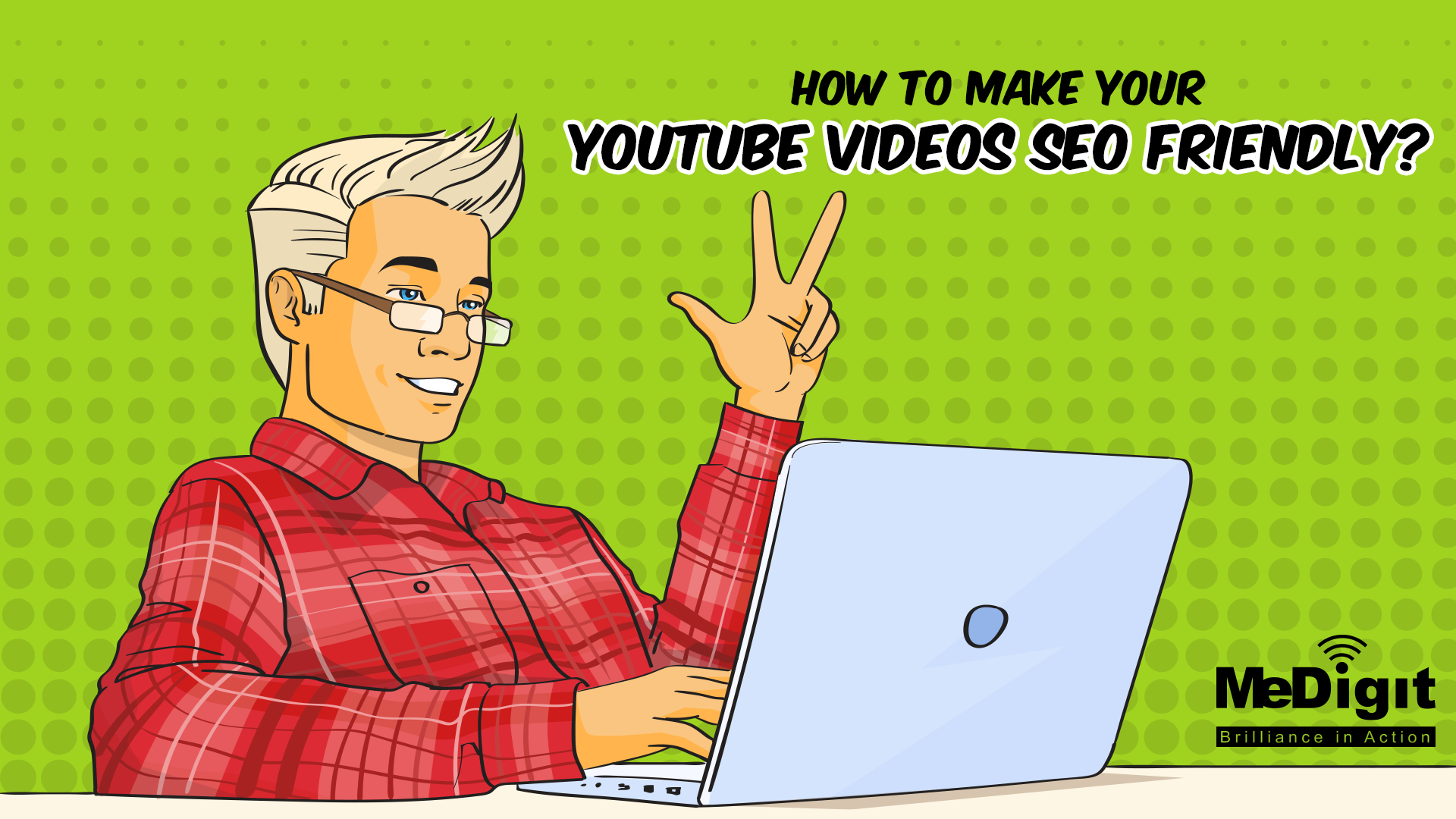How to make your YouTube videos SEO friendly?

YouTube is the second-largest search engine in the world with 3 billion monthly queries. In 2016, the number of searches on YouTube is higher than the number of searches on Yahoo and Bing combined. YouTube reaches more adults between the ages of 18 and 35 than any conventional television channel.
It is essential for brands to give visibility to their YouTube channel on search engines and this, of course, requires a good knowledge of best practices. The world of video has become highly competitive. Thanks to many tips, it is possible to improve the SEO of your YouTube channel in order to allow the videos to be more visible.
In this article, we offer you 9 effective techniques to optimize the natural referencing of your YouTube videos and attract as many Internet users as possible from the search results (SERP).
9 Tips to Improve the SEO of your YouTube Video
To rank videos on YouTube and in Google’s search results, YouTube’s algorithm takes into account several factors or “signals”.
Video title, tags, retention rate and time spent on the video, keywords in the description, length of the video, number of subscriptions after watching the video, number of comments, number of keywords in comments, number of likes and dislikes, number of shares on social networks, etc.
All these factors do not have the same weight, although it is difficult to know exactly the weighting chosen by Google. To improve the SEO of your YouTube videos, you need to work on the main signals. Here are the 7 techniques that we offer you with this in mind.
1. Use “video keywords”
When we talk about YouTube videos SEO, we are actually talking about referencing in Google because that is where you will be able to attract people to your videos. All the techniques that we are going to give you aim to make your videos appear better in the general “All” tab of Google and in the “Videos” tab.
A “video keyword” is a keyword that is attached to queries for which Google displays videos. When you type “Cute Cat” into Google, videos are featured at the very top of the first page of results. This is also the case if you type “google search console tutorial” in the search bar.
If you want your videos to appear on the first page of Google, you should target queries that show videos as results, using the keywords used in those queries. Before choosing the keywords for your Youtube videos, check-in Google that they are “video keywords”. Otherwise, there is almost no chance that your video will appear in the results.
Once you have identified your video keywords, place them in the name of your video file, in the title of the video (which should ideally contain around 50 characters), in the description (we come back to this point below), in the tags.
2. Write a long description of the video
Google and Youtube cannot play the content of your videos. Never forget it! To “explain” to Google robots what your video is about, the best solution is to write a rich and sufficiently long description. At least 150 words; ideally 300 words or more. In any case, avoid descriptions of 2 lines.
The longer the description, the more keywords you can put on it and the more likely you are to reference yourself well. Intelligently place your keyword, using variations so you don’t end up with keyword stuffing. Also, remember to place links to your website and your social profiles within this description. This will better engage your audience.
Needless to say, you should absolutely avoid duplicate content. Concretely, you must create an original and unique description for each of your videos. Do not copy and paste the same description for each video.
For some videos, it may be relevant to transcribe part of the video content. This is handy if you don’t have ideas for a description, but it is not possible for all videos.
3. Add subtitles
YouTube now offers to add captions to your video. To do this, go to your video manager and click on the Subtitles tab.
4. Add smart tags
YouTube gives great importance to tags. It is not a question here of adding dozens of tags, but rather of limiting yourself to 5 or 6 tags, including:
– Your main keyword
– Your secondary keywords
– And the name of your YouTube channel
Why? When a user watches one of your videos, they will see the other videos in your YouTube channel appear in the “associated videos” section.
5. Encourage Internet users to like and subscribe to your channel
YouTube’s algorithm places great emphasis on user experience signals. And in particular, the number of likes and the number of subscriptions to the channel after watching the video. For Google, these are the factors that indicate the relevance of a video and therefore influence your YouTube SEO.
The best way to get more subscriptions and likes is to request it directly from the people who are viewing your videos. All known YouTubers use this technique thoroughly.
There are several ways to ask people to subscribe to your YouTube channel and to like. You can do it:
-
Inside the video (if you appear in the video) or at the end, in the credits for example.
-
By means of annotations integrated into the video. YouTube has several annotation formats available to you. Choose those that are consistent with your positioning and your image.
6. Create links to your videos on third-party pages
The algorithm used by Google to reference YouTube videos takes backlinks much less into account. However, we recommend that you create links to your videos. This will allow you:
-
Increase the number of views on your YouTube videos.
-
Obtain qualified traffic, which will send positive signals to Google and help improve the SEO of your videos.

